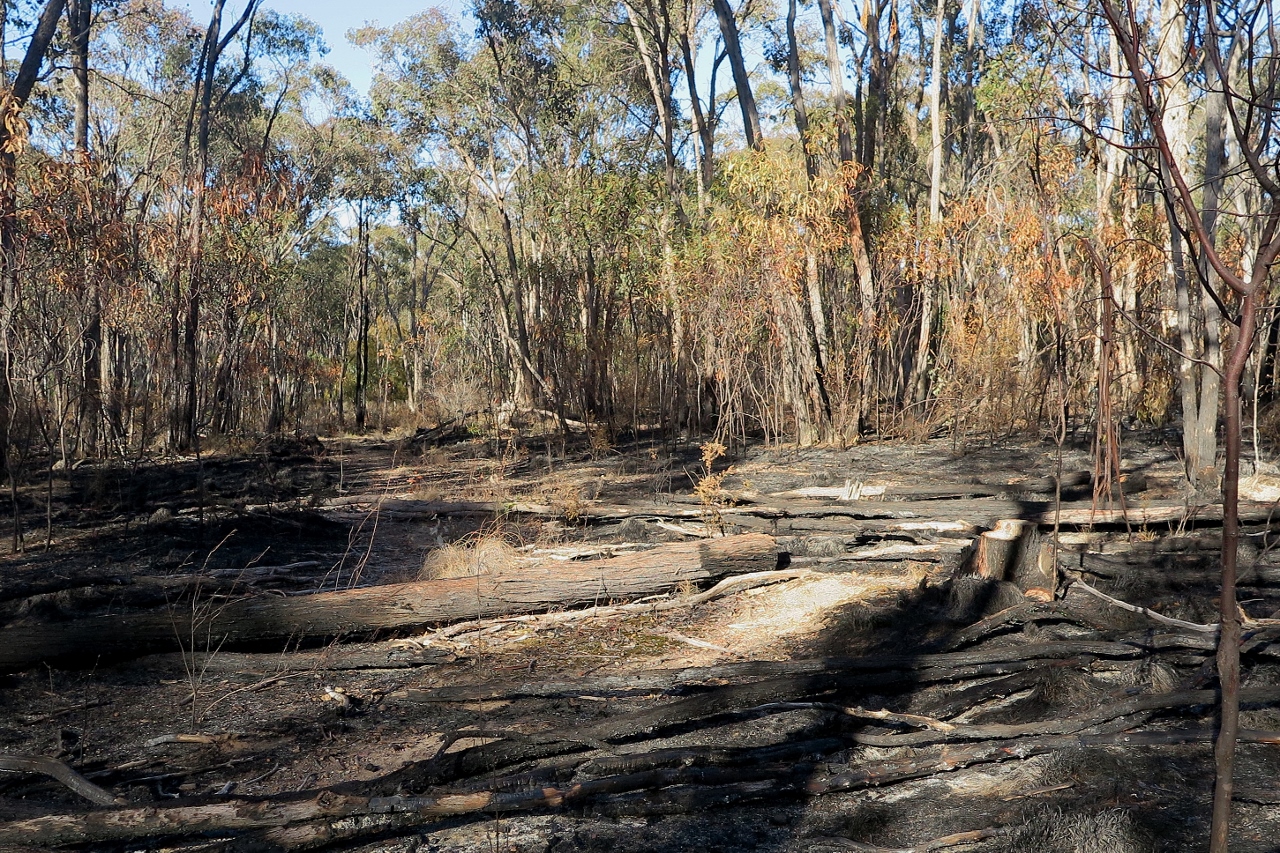Forest Fire Management burned a biodiversity rich section of the Maldon Historic Reserve, near the Railway Track, on May 9. Conditions were described as ‘ideal’, with no wind, and appropriate moisture levels.
Readers will remember we have reported on this fire proposal before—see our posts with links to a map of the site here
The Department’s aim was a low intensity burn to remove 4cm of ground fuel and prevent elevated bushfire hazards. A preburn fire was lit to create smoke so that small animals could get away. Three exclusion zones were created to protect nominated plant species.

In the burn zone: no large habitat trees seem to have been destroyed; but in an area dominated by spindly regrowth eucalypts, the loss of even medium sized trees is to be regretted.
Local environmentalists met with fire management both before and after ignition, and a further onsite meeting is planned for about 8 weeks time.
The fire was described by fire officers as low intensity; staff and students of Melbourne University had placed probes around the site to measure heat levels. In fact, the fire intensity varied widely, with some areas severely burned and others barely touched, achieving a mosaic effect around the site….but managers are considering returning to the untouched areas for another go.
There’s no doubt that managers are making serious efforts to reconcile environmental concerns and current ideas about fire danger. In the present case, the exercise seems to have been pulled off without bringing down any large habitat trees, a significant improvement on past exercises; yet a number of medium sized trees was destroyed—a regrettable result. Though this area is rich in understorey and ground cover plants and orchids, the tree cover is largely spindly regrowth eucalypts, and can ill afford loss of trees of good size.
As we’ve said before, moreover, there’s an apparently irreconcilable clash of views when it comes to that 4 cm of leaf litter: does it constitute a ‘very high to extreme fuel hazard’ (Fuel Hazard Assessment Guide), or is it a precious environmental asset? According to Arthur Rylah research, ‘litter plays an important role in nutrient cycling, and provides important habitat for invertebrates and small vertebrates. Frequent burning (for example, 3-5 year intervals) will disrupt natural processes in the short-term and may eventually lead to a depletion of soil nutrients and loss of habitat.’
Exercises like the one under discussion are in fact experiments. Part of their value depends on what kind of monitoring and research is done before and after them—and as we know, there’s little or no credible research arising from many such burns. As the Auditor General put it in 2021, ‘DELWP cannot demonstrate if, or how well, it is halting further decline in Victoria’s threatened species populations.’




 Click on image for info/order page
Click on image for info/order page Click on image for info/order page
Click on image for info/order page Click on image for info/order page
Click on image for info/order page





















Lets hope that there will be surveys done in 3 and 5 years to determine whether this treatment has made the area safer, or in most other cases, increased the growth of Ladder plants, which make for much more ferocious fires. We have seen this TOO often.
Thanks Rob, at a recent meeting with FFMV at Taradale, they admitted to me that zero fuel hazard assessments are undertaken in the years after a burn – in some cases they do one straight after a planned burn, but they do no monitoring 3-5 years later. Hard to believe, particularly as there is so much evidence that the Elevated fuel loads increase way beyond the pre-burn level after around 3 years, as you say.